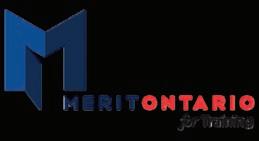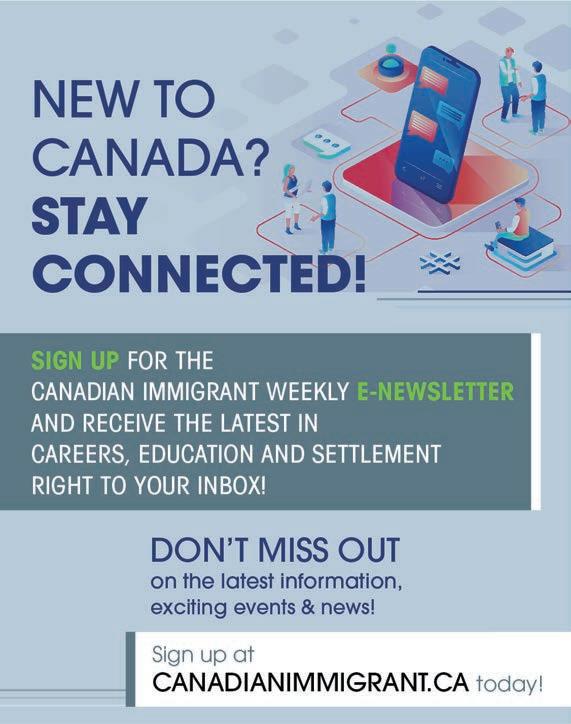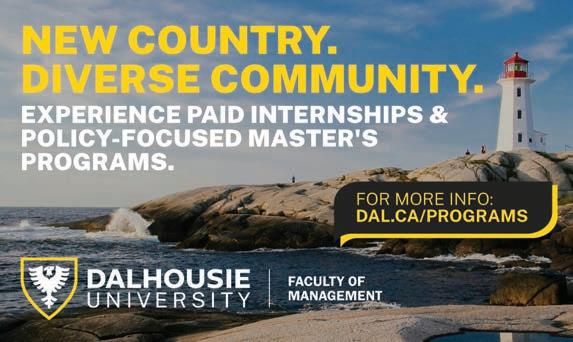




IMMIGRANT CONTENT CREATORS HE LPING NEWCOMERS THRIVE VOTING
Upgrade your resumé and land more interviews with AI JOB TOOLS
































Newcomers face enough barriers. Getting settled shouldn’t be one of them.
From crossing borders to securing visas, newcomers face numerous hurdles before reaching their new home. COSTI is here to ensure that once they arrive they can use their existing skills, learn new ones, and participate actively in all aspects of Canadian life.
Last year, 119,225 COSTI services were accessed.
COSTI provides:
• Employment services
• ESL & LINC Training (Language Training for Newcomers)
• Settlement services
• Post-settlement support
• Multilingual staff fluent in 60+ languages
Learn how COSTI can help you at costi.org or email us at Communications@costi.org.
Immigrant creators building community — and influence — online
Joze Piranian’s journey to finding his voice through comedy


16
CAREER COACH: Six ways to bridge workplace generational gaps
HIGHER LEARNING : Gain the skills to stand out a nd get hired
A I JOB TOOLS: Upgrade your resumé and land more interviews 22 SETTLEMENT

STEPPING STONES: Health care basics for newcomers
IMMIGRATION LAW: New citizenship rules offer hope for Canadians abroad 25 MONEY AND BUSINESS
ENTREPRENEURSHIP: Success through prep, local support and mentorship

Join the Phoenix Team!
Discover the benefits of being part of a diverse workforce recognized for excellence and innovation, dedicated to supporting youth, families, and communities in their journey to thrive.

Group Publisher Sanjay Agnihotri
Editor Baisakhi Roy broy@metroland.com
Editorial Design Safi Nomani
Brand Manager Ricky Bajaj rbajaj@metroland.com
Tel: 416 856 6304
Assistant Manager Laura Jackman ljackman@metroland.com
General Inquiries: info@canadianimmigrant.ca
Circulation/Distribution Inquiries: ljackman@metroland.com

By Baisakhi Roy

Trixie Ling is the founder of Flavours of Hope, a Vancouver-based social enterprise that empowers newcomer women to build thriving food businesses in Canada. Drawing from her personal immigration story and a career in settlement work, Ling has helped launch 15 women-led businesses that do more than serve meals — they serve up identity, belonging and purpose. Ling shares her journey, her passion for food justice, and why connection is the real key to successful settlement.
Tell us about your immigration journey.
I was born in Taipei, Taiwan, but I moved around a lot growing up. I left when I was five and lived in Singapore for a couple of years, then moved to Texas in the U.S., where I stayed from grade three to grade six. After that, I moved to Canada in grade six, which was around 1996. So, migration and adapting to new environments have been a big part of my life from an early age.
Each move meant learning a new culture, trying
to connect with people, and always figuring out how to settle and build community. That’s not easy, especially at a young age, but something that really helped me throughout those transitions was food. Food was how I connected with people, how I learned about different cultures, and how I started to feel grounded in each new place. Sharing meals and trying new dishes with others helped me build friendships and community.
How did your personal experience influence your work?
A big part of my immigration journey was also watching how difficult it was for my parents, especially my mother. Watching my mother struggle with language barriers and isolation was profound. She didn't speak English and found it challenging to access health care, find work or make friends. As a child, I saw how hard it was for her.
When I worked as a settlement worker with refugee women and youth, I noticed similar challenges — they needed more than just practical services. What they really wanted was connections and a sense of community.
I wanted to create an organization that helps immigrant women not just settle but truly flourish. I wanted to provide a platform where women could be proud of their culture, share their stories, and build meaningful connections through food entrepreneurship. I’ve always believed that food is a source of comfort and healing — especially for those of us who’ve lost connection to our culture through migration. I want women to have something meaningful to pass down to their children. Food is one of the most beautiful ways to do that. Through food entrepreneurship, I use this universal language to support and empower immigrant and refugee women.
What challenges do immigrant women face when starting food businesses?
The biggest barriers are access and affordability. Commercial kitchens are expensive and competitive.
There's complex paperwork involving food permits, health regulations and insurance. Many women struggle with language barriers and navigating these systems.
We help by negotiating discounted kitchen spaces, providing a $500 startup fund, and connecting women to mentors and markets. Between 2020 and 2024, we've launched 15 women-owned food businesses representing women from the Middle East, Latin America, Asia and Africa.
We focus on more than just business support. We want women to feel proud of their culture, to have a sense of purpose and to be seen as leaders. Food is a universal language that crosses cultural barriers. It helps women maintain connections to their roots and tell their stories. We aim to increase physical spaces for women to sell their products, expand catering opportunities and continue supporting the launch of women-led food businesses. We're also hiring our first operations coordinator to support our growth.
Name your dreams and believe in yourself. Surround yourself with supportive people. Be committed and passionate. Define success beyond financial gains — consider how your business can bring your family closer, help you represent your culture and make a difference in your community. Remember that starting a business takes a village, so seek connections, mentorship and collaboration.


Canada’s global reputation for high-quality education continues to rise, with 33 universities featured in the 2025 Times Higher Education (THE) World University Rankings. These rankings evaluate more than 2,000 institutions across 115 countries, measuring performance in five key areas: teaching, research environment, research quality, international outlook and industry impact.
Top-ranked Canadian universities include:
• The University of Toronto retains its position as the top university in Canada and ranks 21st globally, with an impressive overall score of 88.3.
• The University of British Columbia follows in second place nationally and ranks 41st worldwide.
• McGill University holds third place in Canada and ranks 45th globally.
Other Canadian institutions that made the national top 10 include:
• McMaster University and the University of Alberta (tied for fourth)
• Université de Montréal (sixth)
• University of Waterloo (seventh)
• University of Ottawa (eighth)
• University of Calgary and Western
University (tied for ninth)
These top universities are spread across four of the most popular provinces for newcomers — Ontario, British Columbia, Quebec and Alberta — making them accessible options for international students.
Beyond the top three, several other Canadian universities also secured spots in the world’s top 200. Notably, both McMaster and the University of Alberta scored a perfect 100 for industry impact, underlining their strong ties to innovation and business sectors.
Ontario has eased immigration requirements for self-employed physicians, making it simpler for them to qualify for permanent residency under the Ontario Immigrant Nominee Program (OINP).
Previously, many physicians struggled to qualify for key immigration streams because the Canadian Experience Class (CEC) requires work experience as an employee. However, under the new regulations, self-employed physicians can now count their work experience toward the eligibility requirements for certain OINP streams, including:
• Express Entry: Human Capital Priorities
• Express Entry: French-Speaking Skilled Worker
• Employer Job Offer: Foreign Worker
Physicians applying under these categories must have work experience in one of the following National Occupational Classification (NOC) codes:
• NOC 31100 – Specialists in clinical and
laboratory medicine
• NOC 31101 – Specialists in surgery
• NOC 31102 – General practitioners and family physicians
Additionally, self-employed doctors can now qualify for the Employer Job Offer: Foreign Worker stream without needing a formal job offer. To be eligible, applicants must be registered and in good standing with the College of Physicians and Surgeons of Ontario under one of the following certificate categories:
• Independent practice
• Academic practice
• Postgraduate education
They must also be eligible for payment through publicly funded health services.
Ontario’s updates align with earlier federal changes designed to make immigration easier for health care professionals. A temporary public policy introduced by the federal government now allows self-employed physicians to count
their work experience toward the Canadian Experience Class (CEC) and the Federal Skilled Worker Program. It also exempts physicians from the usual requirement of having continuous arranged employment for one year after receiving permanent residency.
With Canada facing a growing physician shortage due to an aging population and increased health care demands, these reforms aim to attract and retain skilled medical professionals. Other provinces, including Prince Edward Island, Saskatchewan, Newfoundland and Labrador and Manitoba, have also introduced immigration incentives for health care workers.
These updates to Ontario’s enhanced Provincial Nominee Program (PNP) mean that physicians who receive a provincial nomination will gain 600 additional Comprehensive Ranking System (CRS) points, significantly increasing their chances of securing an Invitation to Apply (ITA) for permanent residency through the Express Entry system.
The Canadian Immigrant Fair is set to return to both Halifax and Toronto in 2025, continuing its mission to support newcomers in building successful lives in Canada. Designed as free, one-stop events, the fairs offer immigrants the tools, connections and information they need across three critical pillars: careers, education and settlement.
Halifax will host its sixth annual fair on May 9, 2025, from 10 a.m. to 3 p.m., at the Canadian Museum of Immigration at Pier 21 (1055 Marginal Road). Just over a month later, Toronto’s edition of the fair will be held on June 27, 2025, at the Metro Toronto Convention
Both events are free to attend and open to all newcomers seeking support in their integration journey. From job seekers and international students to newly arrived families, the fairs provide a welcoming, resource-rich environment to learn, connect and grow.
Attendees can expect:
• Hiring employers and recruiters
• Career tips and coaching sessions
• Resumé Clinic with free one-on-one advice
• Inspiring immigrant speakers
• Practical workshops on career and settlement
topics
• Language support
• Immigration and government services
• Banking, entrepreneurship and small business resources
Whether you’re looking to find your first job in Canada, return to school or access essential services, the Canadian Immigrant Fair brings together the people and organizations that can help. More than an event, it’s a space to gain clarity, confidence and community.
For more information and registration details, visit: www.canadianimmigrant.ca/careerfair.

Meet the immigrant content creators helping other newcomers while carving their own space among Canada’s digital influencers — one reel, post and story at a time
By Nicola Enright-Morin
Entertainment is big business. It always has been, but what constitutes entertainment has definitely changed. Not so long ago after a busy day, people would settle down in front of the TV to catch up on their favourite show. Now phones are our entertainment centre — we’re more likely to watch our phones than actually take a call. Scrolling is in: according to a study by global performance running lifestyle brand Saucony (in partnership with market research company HarrisX), which surveyed more than 1,000 people, the
average person scrolls the equivalent of three marathons a year on their phone.
Influencers carry a lot of clout in the content we view, and in Canada, the influencer landscape is as diverse as the population. From fashion to food to financial literacy and entrepreneurship, immigrant social media influencers are redefining digital storytelling. These creators use platforms like Instagram, TikTok and YouTube to share their journeys, build communities and challenge stereotypes.
They are also turning their personal brands into successful businesses. We spoke to three newcomer influencers from across the country to learn about their journey, and how it feels to be at the zeitgeist of the ever-evolving Canadian digital culture.
Athenas Angulo is a Mexican-Canadian content creator who got her start in 2017 blogging about her journey as a new parent. Fast forward to now, where she is a successful lifestyle and wellness digital creator on

Instagram. She said playing to the strengths of digital platforms is crucial to being a meaningful content creator.
“Social media needs to be social. My background is public relations, so I love building relationships. I love meeting people on and offline and I have created great business and personal relationships though digital platforms,” Angulo says.
She also says it is important for influencers to recognize their worth. “Know your value. What makes you and your content unique is your personality. There is no one who is going to present the content in quite the same way as you, and that is also the key to creating long-lasting relationship with your audience and brands.”
With digital media and influencer marketing rapidly on the rise, brands of all sizes are recognizing the power of diverse voices in the marketplace. Canada currently ranks number four in the world’s global advertising markets (behind the U.S., France and U.K.), a sector that grew 53 per cent between 2018 and 2023. This sector surged during the COVID-19 pandemic and is showing no signs of slowing down. As Canadian businesses look to engage more multicultural consumers, immigrant influencers are at the forefront of this digital and marketing revolution, redefining representation in the media.
Angulo said that since the advent of the Black Lives Matter movement there has been a positive change in the way brands are making a conscious effort to connect with a diverse portfolio of influencers. Angulo has had the opportunity to work with global brands. “One of the surprising things to me is how much big brands value working with influencers of all sizes, including micro influencers. It’s really encouraging to see how all influencers are valued.”
Doctor Neha Rana is an Indian immigrant who lives in Ottawa. She also happens to be a scientist with a penchant for creating Instagram content that gives back to other newcomers. Her content spans a broad range of topics, including immigration guidance, lifestyle tips and the latest social media trends. Like all the influencers we spoke to, Rana thinks carefully about the brands she works with.
“I’m very intentional about the partnerships I take on — I only promote products or services I genuinely believe in, ones I think would be helpful to newcomers or people interested in life in Canada,” she says.
The influencers we interviewed also said being a content creator has shaped their Canadian journey. Calgary-based Gursahib Singh creates videos on YouTube and Instagram
and has found content creation to be a positive outlet. He shares tips and information to help newcomers and prospective immigrants better understand and manage their move to Canada.


“Back in India I was a teacher,” he says. “When I first arrived in Canada as a student, I found it difficult to navigate the challenges of newcomer life, so I became a content creator to help others so that they didn’t make the same mistakes as me.”

Singh creates videos in Hindi with English subtitles, and says he tries to entertain and answer questions. He says, “I create in Hindi because I want to speak from the heart and create an authentic connection.”
Like Angulo and Rana, Singh adds that brand partnerships have been a good way to make extra income and enjoy new experiences.
If you’re planning to create content to share your experiences as an immigrant to Canada, all the creators we talked to offer the same tip: be yourself. Authenticity is key to connecting with others on social media.
They also agreed it’s best to start small. Creating content takes time and hard work: planning, scripting, filming, editing, engaging with your audience and staying updated — especially when you’re creating content involving complex information or advice. It takes time and consistency. It’s not just a 15-second reel — it’s hours of effort behind the scenes.
However, all the influencers said the hard work was worth the reward. Rana says, “The biggest surprise is probably the kind of impact


a single post or video can have. I’ve had people say, “You gave me the confidence to move,” or “Your reel helped me understand the permanent residency (PR) process.” I never imagined my story could help others take that leap. It’s incredibly humbling and motivating."









Growing up, Joze Piranian did everything he could to avoid speaking. Now, through public speaking and stand-up comedy, he has found not only his voice, but also a global platform to inspire others
By Lisa Evans
Lebanese-born Joze Piranian never imagined he would become a globally recognized speaker. Born with a severe stutter, the idea of introducing himself — let alone speaking onstage — felt impossible. Years later, the very thing he feared most became his calling.
“I grew up avoiding speaking to people almost entirely out of the fear of being judged for sounding different,” he says.
Stuttering is a communication disorder that affects the area of the brain that controls speech. This condition impacts about one per cent of the world's population. But Piranian’s stutter wasn’t just a speech impediment. He battled extreme social anxiety, often feeling ashamed and embarrassed. “The fear of judgment was so powerful. I had a hard time accepting that I had to sound different if I wanted to speak and express myself,” he says. Staying quiet felt like the easier option. Despite years of speech therapy, psychotherapy and even hypnotherapy, his stutter took control, preventing him from expressing himself fully.
When Piranian had the chance to move to Montreal to study at McGill University, he saw it as a fresh start. “I thought that moving to Canada would be this big reset, that all my fears would magically disappear,” he says. But reality didn’t match his expectations. His fear of speaking followed him. Instead of embracing change, he continued his avoidance tactics, even asking professors to exempt him from class presentations.
“I thought that just because I changed my environment, I’d somehow leave my stutter behind. But nothing changed. I was the same. And that realization felt like failure,” he admits.
If moving to a new country wasn’t enough to transform his life, Piranian knew he needed to do something drastic. So, he joined Toastmasters, a public speaking club. “The only way to overcome stuttering and all the pain it came with was by doing the one thing I feared the most: speaking,” Piranian says. Introducing himself at that first meeting was nervewracking, but the group was encouraging and welcoming and Piranian looked forward to
going to weekly meetings, even signing up for some speaking competitions.
His next step was even bigger — he joined McGill’s debate club — and years later, took a stand-up comedy class. Pushing himself into these speaking situations was terrifying, but something inside him had shifted. He realized that his fear of wasting his potential was greater than his fear of stuttering. “The fear of squandering my potential was a big motivator, along with the fear of living a life filled with regrets,” he says.
Today, Piranian travels around the world, sharing his story in three languages (English, French and Spanish) onstage in front of hundreds and sometimes thousands of people.
Piranian describes himself as an “accidental public speaker.” “Technically, me becoming an astronaut was way more likely than me becoming a professional speaker,” he says.
He didn’t join Toastmasters thinking he would become a full-time professional speaker. But entering public speaking competitions
We have to repeatedly push ourselves as well as take care of our mental wellness so we’re able to tackle challenges."

by Wandering Eye Photography

led to wins, which led to invitations to bigger stages. After his first TEDx talk, conference planners started reaching out. He soon realized that this was more than just a way to conquer his fears — it was a career.
By 2019, he was performing more frequently, both in comedy and public speaking, which he

At Western Union, we’re proud to support your efforts. You can send money back home quickly and easily online or with the Western Union mobile app. Western Union has a $0 fee for new customers, helping you save on your first transaction. Western Union makes money from currency exchange. Visit https://www. westernunion.com/ca/en/home.html for more information.
These four tips will help you live healthier, so you can achieve your goals and be there to support your loved ones in the best ways possible:
decided to pursue full-time. He now travels the world as a keynote speaker at conferences and educational institutions, while also performing stand-up comedy in clubs.
Piranian has spoken at major companies including Google, Boeing, Starbucks, Tesla,
Dell and TikTok and has delivered five TEDx talks. His story has been made into a CBC Gem documentary, Words Left Unspoken and he recently signed a book deal with HarperCollins that will come out in January 2026.
“Speaking is something I’m very passionate about, both from the perspective of selfmastery, self-improvement and changing my relationship with discomfort. But also having an impact, empowering other people to overcome their own fears,” he says, adding that he tells people to use “fear as a compass” to move forward on their path. “We have to repeatedly push ourselves as well as take care of our mental wellness so we’re able to tackle challenges.” It's no accident that Piranian inspires people around the globe with his story of turning his greatest challenge into his greatest strength by owning his voice. “I feel like I’m doing what I’m supposed to be doing,” he says.
Piranian hopes people take this lesson away from his story: it’s not only OK to be different, but to embrace those differences. “That could mean having an accent when you’re speaking English, having a disability, being neurodivergent or dealing with mental health challenges. Own what makes you unique,” he says.
No matter where you are in life, young or experienced, being in good health can help you get through any challenge.
If you’re new to Canada, staying healthy is even more important. As you build a life here, steering clear of illnesses will help you continue to work hard toward your life goals. It can also help you advance in your career faster, increasing your earning potential so you can send money to support family and friends back home.
1. Get regular exercise
Regular movement, like walking part of the way to work or school each day, or spending 10 minutes every evening doing yoga or a small workout, will make sure your body builds strength and endurance.
2. Eat foods that nourish you
From breakfast and lunch to snacks and dinner, eating food that’s full of nutrients to help fuel you throughout the day is the basis of a healthy lifestyle. It gives you energy your body needs to keep going after your goals.
3. Practice gratitude
Feeling unmotivated happens to everyone – and practicing gratitude every morning before getting out of bed, or every evening before you fall asleep, will help boost your momentum so you can take on challenges with enthusiasm.
4. Socialize every day
Getting together with the people you care about helps you feel part of something more than just your work or studies. You form bonds that can support you through the challenging times and help you enjoy
the good times in your life.
Staying healthy can be challenging, but eating well, exercising, practicing gratitude, and building strong relationships with the people around you can help you be the healthiest and happiest version of yourself.
At Western Union, we hope you can use these habits – or find ones of your own –to become your healthiest, happiest self. So you can achieve your goals and build the life you want for yourself and your loved ones, here and abroad.








Halifax
Toronto - June 27, 2025
Winnipeg - July 4, 2025
Calgary - August 8, 2025
Vancouver - October 2025
Mississauga - November 2025

Careers
•
• Career search and interview workshops
• Resumé clinic
Education
• University and college info
• English pronunciation workshop
• Foreign credential information
• Tuition microloans
Settlement
• Inspirational immigrant speakers
• Immigration and visa advice
• Settlement services and banking information
• Networking workshop

Today’s workplaces have to navigate the challenges and opportunities arising from generational divide and the influence of technology.
Whether you are an emerging employee or a seasoned pro, or consider yourself Gen X, Y, Z, Alpha or baby boomer, bridging generational differences and working in an effective inter-generational workforce can indeed be challenging.
Here are some proven ways to successfully enhance the day-to-day workplace environment, boost satisfaction and drive productivity for yourself and for the business.
1. Tailor your communication style
Enhanced communication, including open
dialogue, active listening and tailored messaging is one of the most crucial strategies to bridge the intergenerational gap in the workplace.
Keep in mind that when you communicate with people from a different generation, they may prefer different communication styles and channels. For example, an older professional may prefer in-person meetings or detailed reports, while someone younger may prefer virtual meetings or concise summaries. Someone fresh out of college and in his or her first workplace environment may prefer instant messaging and digital collaboration tools.
2. Engage in virtual or onsite coffee chats
Whether you work onsite or remotely, having relaxed, unstructured interactions help break down barriers and build stronger relationships.
Which is why, in lieu of the traditional casual water cooler conversations, virtual coffee chats have become a powerful alternative today, fostering informal connections among employees new and old.
This is where you can share expertise, learn from each other and connect across teams. In addition to benefitting from continuous learning, you can break down hierarchical barriers, foster mutual respect and build a more cohesive team environment.
Collaborate on cross-functional projects
Cross-functional projects effectively bridge gaps by requiring employees from different departments to collaborate, combine their unique skills and achieve shared goals. This collaboration drives innovation and helps you
understand the roles and challenges of your team members better.
Register for interactive workshops that blend learning, collaboration and team bonding in a dynamic setting. You can work with others to tackle real business challenges or develop new skills in a hands-on, interactive environment.
Peer resource groups can be employee-led groups focused on shared interests, backgrounds or demographics. The groups create a sense of community in the workplace, allowing you to connect over common experiences and advocate for shared causes.
The groups can play a crucial role in bridging gaps by fostering inclusivity and belonging. They provide a space for you and other employees to support each other, share knowledge and collaborate on initiatives that enhance company culture.
Many organizations promote a buddy system
can help ease the transition into your new role. If you are seasoned, you can still develop your leadership and mentoring skills, contributing to a culture of mutual support and collaboration.
Your organization’s social intranet platform can be the perfect digital hub to communicate, collaborate and share information. Through this centralized platform, you can also interact and add value through features like activity feeds and discussion forums. By sharing ideas with colleagues who share similar interests or work on related projects, you are in a position to foster a sense of community.
Volunteer programs offer an opportunity to give back to the community, foster team bonding and provide a sense of purpose. Beyond your regular schedule, you can volunteer for extra-curricular projects, charity or community events — leading to stronger connections and
• Communicate with clarity: Share ideas confidently. Practise active listening and demonstrate empathy and understanding. Provide regular feedback and always be transparent.
• Upskill and reskill: Work with mentors and access resources to upgrade yourself with the skills needed for future growth and challenges.
• Join training programs: Seek diverse training opportunities, including inhouse workshops, online courses and professional development seminars.
• Build interpersonal relationships: Volunteer to collaborate with colleagues on extracurricular projects. This will not only bridge gaps but also foster a sense of community and belonging.



hen a newcomer to Canada has difficulty getting work in their field or even finding other reasonable employment opportunities despite having significant work experience from their home country, going back to post-secondary school can give them a boost. Education can be a useful bridge to employment.
College and university programs not only provide specific information and skills, but they also demonstrate a candidate’s knowledge of Canadian culture, standards and regulations. Many schools also offer the opportunity to gain work experience through school employment or placements. Furthermore, most institutions offer career services that can help prepare students for job search.
Returning to post-secondary doesn’t have to mean adding a full degree. In addition to degree and diploma programs, there are oneyear certificates and individual courses offered through a school’s continuing education department. What you decide to study may not even be related to your subsequent work life. Sometimes you may pick a program or course that interests you or that you feel will lead to good future opportunities. It may simply offer a good way to enhance personal and intellectual growth. Whatever your reason, your studies can demonstrate to employers your work ethic and written and verbal language skills. It may also showcase your problem solving, communication and interpersonal skills, which are critical in the workplace.
Post-secondary education may help you find the people who become your references or who can tell you about job leads and even future employers. They can build your personal and professional network.

opportunity.
Feroz came to Canada from Iran with a degree in economics. His parents had steered him toward this field because they thought it would ensure a steady job in Canada. After he arrived and could not find work, he enrolled in a full-time college diploma program in business and applied for a parttime reception job at his college. He enjoyed meeting people and was good at customer service. When he applied for a part-time job at a bank, he asked his employer at the college for a reference. At first, he was given very few hours at the bank, but those grew into a more significant amount of time as he proved himself capable and efficient. After two years, he left his three-year diploma program because he was offered a full-time position at the bank. Feroz feels that his college experience gave him a leg up in the job market.
“Going to college in Canada was so much more than getting an education. It was an opportunity to improve my English, to meet people in my field, to gain references, and to showcase my abilities and work ethic. It was exactly what I needed to get into the job market,” he says.
Trudy was a professional planner from Türkiye. She felt her graduate degree and the five years of experience working in Türkiye would get her a job easily in Canada. She landed a few interviews but never received an offer. While it is true that she wasn’t familiar with Canadian planning practices, she felt it would not be difficult for her to learn. “I now realize that employers didn’t trust that I knew enough about Canadian practices and weren’t willing to give me a chance. A short program at college gave me what I needed to prove to them that I

was able to do the work. I not only learned relevant content, but I also built excellent relationships with my professors who became my references.” Eventually, she enrolled in a one-year post-graduate diploma program related to planning and computing at a local college and when she finished with excellent grades, employers saw her differently. Her up-to-date computing skills and academic success helped her land her first professional job in Canada in a planning office.
Many newcomers come to Canada with a good education and work experience, but openings in their field may not be plentiful. Additional coursework may help them get familiar with Canadian work practices, prove their competencies and give them a competitive edge in a tight job market.
Geneviève Beaupré and Susan Qadeer have extensive experience working in university and college settings, providing career, academic and personal counselling to international and immigrant students.














AI tools for career development can help improve your resumé and get you past the screening stage into the interview zone
By Gloria Suhasini
Indian-born Carolina Mithra came to Canada 10 years ago as an international student to study human resources at Seneca College in Toronto. Upon completion of the program, she joined a digital acquisition platform’s HR team as an intern. She enjoyed her job screening resumés and conducting phone interviews to shortlist candidates for the next step in the recruitment process.
However, when she entered the job market a year later, the hiring process was already showing changes. “When I applied for a call centre job, screening started with an automated phone interview, where I responded to preset questions,” she says.
The talent acquisition process has definitely been evolving, due in large part to the growing role of artificial intelligence (AI). Tech companies such as IBM boast application tracking system (ATS) solutions to find top talent faster through automation within candidate sourcing and recruiting. As machine learning evolves, one can expect AI to conduct video interviews that read into expressions and analyze voice modulation to infer emotions.
Presently, automated solutions are intended to reduce arduous data gathering tasks of HR personnel and help them to focus on other priorities in the organization. However, there is an emerging threat in this recruitment process,
according to Professor Valerio De Stefano at York University’s Osgoode Hall Law School.
“Some companies that are making inroads eliminating racial and gender biases might inadvertently revert to their previous ways, due to implementation of AI in this area,” says De Stefano, whose research interests include algorithmic management and AI and work.
For example, a suitable candidate could be eliminated early in the selection process, because

their resumé indicated a few gaps in their work history. “Likely, AI determined them to be unfit for the job due to breaks in employment. What AI may not recognize is that the person might have been off the workforce on parental leaves, something which would disproportionately affect women,” notes De Stefano, Canada Research Chair in Innovation, Law and Society.
“AI is not good at tailoring recruitment for the needs of a specific industry and companies because commercially available software applications are not trained on those industries and companies and are more generic. As such, hiring through AI can be suboptimal and not accurate enough,” De Stefano points out.
Glan Chen, who designs leadership and talent development training programs for Canadian and international clients and offers career coaching to young professionals, students and recent immigrants, agrees with De Stefano. He says AI tools are not foolproof, from the perspectives of both prospective employers and job seekers. At least not just yet.
“Employers are risking not hiring the best candidate just because the job seeker did not get past AI screening that focuses on matching keywords and skillsets with the job description. On the other hand, a perfect candidate might focus on relevant work experience and core competencies, rather than optimizing keywords.”

Chen, who has developed a competency-based process that integrates a data-driven approach and a personalized career planning strategy for his clients, recommends job seekers to first write their “master resumé” supported by their core competencies and then have it reviewed by a resumé-building tool online. Comparing the original with AI recommended revisions — based on skillsets and the desired job title — the job seeker should re-draft the resumé as necessary, he says.
For newcomers, Chen also recommends choosing up to three sectors in which they would like to work. Within that, pick at least two positions, one at the entry level and another that they want to be in, in a couple of years, and build their resumés with recommendations from AI tools.
AI can also help with preparing for interviews, adds Chen. “If you are interested in applying for a position that matches your skillset, then ask AI to help you with not only creating the resumé but in preparing for the interview as well. They can provide possible questions and if you are able to answer based on your resumé, you have a good chance at getting an interview and even the job.”
Running through the job description and possible interview questions on the tool, you can also get desired answers that you can use for preparing your own responses. However, Chen cautions not to exaggerate expertise or claim more than what your work experience is, based on the AI suggestions. “For example, someone who has one year of experience in data entry should not be claiming leadership in data analysis just to include related keywords.”
“You might pass the screening algorithm
but the human reviewing in the next level will reject your application. Instead, focus on highlighting your strengths in knowledge of the work and ability to work in a team, and so on,” says Chen, who has insight into corporate talent development and recruitment strategies. In his native China, he has helped marketing Fortune 500 companies such as Johnson & Johnson MedTech (formerly Medical Devices & Diagnostics), Nike and a platform-based startup company, in various strategic management and leadership capacities. He also helped IKEA set up its first shop in Shanghai.
Keep in mind that HR professionals are immersed in talent acquisition. They can gauge AI’s influence on your resumé and what level of expertise and experience you may have, simply by scanning your resumé and cover letter. So, the bottom line is, use AI only to optimize your chances of getting an interview call and preparing for a successful interview.
While a resumé and cover letter need to stand out when recruiters and ATS tools filter through, being active on social media platforms for job seeking, professional networking and strategic career transition, is important.
LinkedIn is the most popular and respected tool to achieve whatever your career goal is, so create a profile and add an online portfolio, if you haven’t already. Chen advises: “Follow professionals and companies in your field on social media, engage in their posts and take the initiative to be active on LinkedIn to be noticed by recruiters as well as those who you might want to reach out later for job leads.”
Chen adds that the traditional route of networking works best for landing a job. Whether you connect first on social media or at a networking event in person, his strong advice is to meet people in your industry or in the company you want to work for. “Meet for a high-quality coffee and chat to get more insights about the industry, work environment and opportunities, or for an informal interview.”
Mithra, who was once an introvert and shied away from meeting people and resorted to applying through job boards such as Indeed and Workopolis, recognizes networking as a key part in job search. She found an entry-level job in a real estate firm a few years ago, before moving into a position in payroll administration in the mortgage division of one of Canada’s Big Five banks, both through networking.
“Now that I have my foot in the door in a large corporation, I am working toward finding a suitable job within the HR division,” says a confident Mithra, who is on track with a strategically paved career path and an AIenhanced resumé to reach her professional goal.
Chen has guided more than 1,000 clients, including international students and recent immigrants to enter the Canadian job market and establish themselves in their chosen careers. Here are steps he suggests to help you effectively prepare for an interview:
1. A sk an AI tool to generate a list of possible interview questions.
2. Prepare responses by yourself, based on your core skills and experience.
3. A sk the AI tool to provide possible a nswers to those possible questions.
4. Compare your answers to AIgenerated ones.
5. Recreate responses leveraging AI’s i nput and prepare for the interview.
Big Interview uses AI to analyze your interview answers and provides feedback on tone, clarity and confidence.
Hunter.io helps you locate the emails of industry professionals to expand your networking reach.
Jobscan compares your resumé with job descriptions and provides insights to improve your chances of passing ATS filters.
LinkedIn AI Tools generates optimized LinkedIn profile summaries and suggests networking strategies.
Otter.ai helps job seekers analyze their past interview answers and refine responses.
PartyRock helps you build AIpowered tools that match your resumé keywords to job descriptions and industry requirements.
Resume.io provides AI-powered resumé templates and keyword optimization to improve ATS compatibility.
Teal HQ helps manage job applications, tailor resumés for different roles and track interview progress.
Yoodli provides real-time feedback on your speech clarity, pace and confidence in mock interviews.

Coming to a new country is a brave endeavour, but you quickly realize that things are much different here than what you’re used to. It’s a lot of new information to learn! To avoid getting overwhelmed, think of your learning journey as taking small steps toward success, like hopping from one stepping stone to the next across a river of challenges toward your destination.
In this new regular series, we will navigate the settlement information every newcomer has questions about together, starting with some health care basics.
Ayoung refugee from Myanmar, Moses, of the Karen ethnic minority, fled the violence in his country with his family, finding refuge on the Thai border before being relocated to Canada as government-assisted refugees. “I had mixed emotions of relief and gratitude for finding safety and a sense of loss from leaving my community behind,” he says.
While dealing with this emotional settlement journey in Surrey, B.C., Moses received lifealtering news — he had a brain tumour. He now faced another daunting journey ahead — of navigating the health care system while facing cultural and language barriers.
Not sure what to do, Moses leaned on DIVERSEcity Community Resources Society case worker Hermon Lay, who shares the Myanmar heritage and Karen language. Lay supported Moses through the process of accessing cancer treatment while building a new life in Canada.
“Moses going through settlement and a new brain cancer diagnosis was by all definitions a tough situation,” says Lay, explaining that a newcomer needs information and orientation to help them navigate Canadian systems like health care, especially in times of crisis. “My goal is to bridge cultural gaps and promote integration, while providing emotional support and practical assistance to help them through tough situations.”
Moses says, “Hermon helped me access
important services and resources in the community. With his support, I received treatment at the hospital and am now a cancer survivor.”
Canadians are fortunate to have access to free medical care; this includes everything from free doctor visits, to emergency care, to maternity care, to treatment of illnesses like Moses’ diagnosis. It’s why Canada’s universal health care system is known worldwide and is often a factor in people’s decision to immigrate here.
But, like any complex, free public system, there are challenges and criticisms. Over the last decade, it has been incredibly difficult to find a family doctor. And wait times at hospital emergency rooms, for specialist appointments and for surgeries can be too long. There are systemic issues that need to be addressed, of course, but it’s critical that newcomers learn about Canada’s health care system and how to navigate it, one step at a time.
Health care in Canada is administered provincially, and your access to it as a newcomer may vary depending on where you settle. Did you know that in some provinces, you have to be a permanent resident for three months before being eligible to get your medical card? Some provinces, like British Columbia and Ontario, offer coverage from the day you arrive, while others, like Quebec or Manitoba, may have a three-month waiting
period for permanent residents.
In some provinces, you may also have to pay a monthly premium or health fee. And what you’re covered for may slightly differ between provinces, too — for example, ambulance services, dental care for children, or mental health counselling may or may not be included depending on where you live.
So, your first step is to contact your province’s health ministry to get enrolled in the health system. If you’re getting newcomer settlement support through a non-profit organization, like DIVERSEcity, they can help you do this. Doing it yourself? Here’s a tip: Google your province name and the words “health card.”
To apply, you will have to show proof of residency and your ID. After applying, you will then receive a health card, which you will have to show when you go to medical appointments and hospitals.
Important: If there’s a waiting period before your provincial coverage starts, be sure to buy private insurance through a provider like Blue Cross, CAA or Manulife. Emergencies can happen anytime — if your child breaks their arm or you need hospital care while still uninsured, the outof-pocket cost could be financially overwhelming.
Find a family doctor — if you can Next on your agenda will be to find a family
doctor in your community. Unfortunately, this may be a challenge as many doctors are not accepting new patients. Canada is facing a shortage of family physicians, especially in rural or rapidly growing areas. Demand on the health care system is greater than its resources. As work is being done to address this, what can you do in the meantime?
Your provincial health ministry website is a good starting point — it often includes tools to help you search for doctors or nurse practitioners accepting new patients. Some provinces, like Ontario and British Columbia, have centralized waitlists you can join. It may take some time to finally find a regular doctor to oversee your and your family’s care.
If you're able to find a nurse practitioner accepting new patients, they can act as your primary care provider, much like a family doctor. They can diagnose illnesses, write prescriptions, order tests and refer you to specialists.
Overall, health care is still available to you even without a family doctor, so it’s important to know what other services are available and how to access them.

prescription and more — then you can search for a walk-in clinic nearby.
The term “walk-in” may be a little misleading, however. Due to high demand, it’s not as simple as arriving at one of these clinics and expecting to be served quickly. There may be long wait times and understaffing. In many cases, slots to see a doctor the same day, are filled up by 9 or 10 am. The best thing to do is to line up early or call in the morning to book a time. Websites like Medimap.ca or your provincial health portal can help you check clinic availability and wait times in real time.
Can’t get in to see someone today? Provinces may also have a health advice phone line staffed by registered nurses, often in multiple languages that you can call to access non-emergency health information, including services like HealthLink BC (811) or Ontario's Health Connect.
For more severe — but not life-threatening — issues like sprains, strains, high fever, vomiting, a cut requiring stitches, and minor burns or infections, some communities have urgent and primary care centres (UPCC). These are designed to ease the burden on emergency departments and offer faster care. Again, like walk-in clinics, appointments may get booked up early, so try calling ahead.





Both walk-in clinics and urgent care centres can refer you to other services you may need like X-rays, bloodwork or specialist care, which are





generally covered by your health card. Getting an appointment at these labs for these services may also require some waiting and patience.
Finally, in cases of true emergencies, such as trouble breathing, severe pain or injury, signs of heart attack or stroke, inability to speak, nonstop or intense bleeding, broken bones and loss of consciousness, you should go to your nearest hospital emergency room (ER) or call 9-1-1- for an ambulance. (Note: this service is available across Canada, but ambulance transport may not be fully covered in every province. In some areas, you may receive a bill for ambulance service after the fact.
At the ER, patients are assessed and treated based on urgency, not arrival time. So, there are often long wait times at emergency rooms, especially if you only have a minor concern. It’s up to all of us to help improve the system by going to emergency rooms only for serious or lifethreatening conditions.
Our series continues online. Visit canadianimmigrant.ca to learn what’s not typically covered under Canada’s health care system — and to uncover some of the most common misconceptions about it.
Stepping Stones is a series created and written by DIVERSEcity Community Resources Society. See www.dcrs.ca.



Looking to advance your career in Canada? This Web Conference Series is designed specifically to support you on your journey in Canada!
These FREE 90 minute web conferences give you direct access to industry experts from across the country, looking to help you land your dream job.

Banking & Finance Professionals
Nursing & Medical Professionals
Engineers, Technicians and Technologists Human Resources
& Interview
For years, Canadian citizens living abroad have faced legal barriers when passing on their citizenship to children born outside the country due to a restrictive rule in the Citizenship Act known as the first-generation limit. Fortunately, change is on the horizon. While permanent legislative reform is underway, new interim measures announced in March 2025 by Immigration, Refugees and Citizenship Canada (IRCC) offer a potential pathway for those affected.
Canada’s Citizenship Act includes what’s known as the first-generation limit — a rule that prevents Canadian citizens born abroad from automatically passing on their citizenship to children who are also born outside Canada. Since its enactment in 2009, this rule has faced widespread criticism for the challenges it creates for Canadians working or living internationally. In December 2023, the Ontario Superior Court of Justice found the first-generation limit to be unconstitutional. The Government of Canada chose not to appeal the decision, recognizing its significant implications for many Canadians. As a result, the federal government was ordered to amend the Citizenship Act. However, progress has been slow. Although Bill C-71 was introduced in May 2024 to address the required changes, it has yet to be passed. And now, almost a year after its initial introduction, the government has requested a further 12-month extension to reintroduce the legislation and provide Parliament with time to consider and implement the necessary reforms.
The continued delays have been understandably frustrating for families affected by the first-generation limit who have long awaited the opportunity to apply for citizenship. Fortunately, IRCC has introduced a potential solution through expanded interim measures while formal legislative change is still underway.
Under these measures, certain individuals may now apply for a discretionary grant of citizenship under section 5(4) of the Citizenship Act. Those who are eligible include:
• Those born or adopted before December 19, 2023, impacted by the first-generation limit.
• Those born or adopted on or after December 19, 2023, whose Canadian parent had at least 1,095 cumulative days of physical presence in

before their birth or adoption.
• Certain individuals born before April 1, 1949, still affected by the limit.
• Persons who lost citizenship under the former section 8 retention rule of the Citizenship Act.
Individuals who meet one of these eligibility requirements must provide a detailed explanation of their circumstances and demonstrate why their case warrants special consideration. IRCC has not published specific criteria for how these discretionary applications will be assessed. However, it is expected that officers will consider similar factors to those used in urgent processing requests. These include:
• to help avoid situations of potential harm or hardship due to factors such as race, religion, nationality, sexual orientation, gender identity or expression, or membership in particular groups
• to move minor children (under 18) to Canada and they were born outside Canada, and have a Canadian parent
• to help with a case of statelessness
• to travel because of death or serious illness in
the family, and you’re unable to get a passport in your other nationality
• to give up (renounce) foreign citizenship by a certain date
• for employment or education, specifically to apply for a job, avoid losing a current job, or attend a school, college or university
• you need access to social benefits like a pension, health care or a social insurance number
Although a discretionary grant, the broad scope of factors suggests these interim measures could offer a meaningful opportunity for many individuals affected by the first-generation limit. While some may prefer to wait for permanent legislative reform, the timeline remains highly uncertain. With a further 12-month extension requested and continued unpredictability in Canada’s immigration policy, the future of Bill C-71 remains unclear. In the meantime, these interim measures could provide a concrete path forward under the current framework.
Maxine Blennerhassett is with Canadian immigration law firm Larlee Rosenberg.

Entrepreneurship is an empowering choice. It allows newcomer entrepreneurs — those who have immigrated to Canada within the past 10 years and are starting, managing or expanding a business — to forge their own success, create jobs and contribute to local economies. However, it comes with its share of complexity from navigating regulatory hurdles, to understanding unfamiliar markets, to managing financial constraints.
To help newcomers looking to start or grow a business, the Canadian Federation of Independent Business (CFIB) explored the experiences of 14 newcomer entrepreneurs in its report, From Challenges to Opportunities: The Newcomer Entrepreneurial Experience in Canada. They offer insights into the strategies that have helped them succeed: a well-calibrated mix of preparation, local support and mentorship.
For newcomers looking to start a business, due diligence is essential. Understanding Canada’s economic landscape, regulations and market structure, can prevent costly missteps. “Take your time. The Canadian market operates differently. Rushing in without due diligence can be disastrous,” one entrepreneur warned.
Early-stage business development demands a balance between financial prudence and strategic investment. Many entrepreneurs rely on personal savings, making liquidity management critical. Some emphasized leveraging peer networks and free resources before committing to costly professional services. “Unless you have a lot of money to invest, it’s going to be expensive,” said one entrepreneur, underscoring the risks of depleting funds prematurely.
Others, however, advocated for early investment in legal and financial expertise to build a solid foundation. “If you have the means, hiring a lawyer and an accountant from the start saves money in the long run,” a newcomer shared. The right approach depends on resource availability and long-term sustainability.
Regardless of strategy, entrepreneurship is capital-intensive. Thoughtful planning and efficient resource management are crucial for businesses to weather early challenges and adapt when necessary.
Breaking into Canada’s established business

community is a common challenge for newcomer entrepreneurs. Without an extensive network or local work experience, securing clients and partnerships can take time — but investing in building those relationships is well worth it. "Your network is your net worth. Canadian companies are highly network-based,” said one newcomer entrepreneur.
Identifying industry events, online platforms and local organizations helped entrepreneurs forge key connections and access community support from the start. Newcomer entrepreneurs interviewed by CFIB found success by leveraging networks such as PORCH, a community for international entrepreneurs in North America or Calgary Catholic Immigration Society, a settlement agency that offers training and education programs for newcomer entrepreneurs, or the Diverse Entrepreneurs Business Incubator operated by DIVERSEcity Community Resources Society in Surrey, B.C. These organizations provided essential networking opportunities, mentorship and resources ultimately offering a crucial boost to their business. “Find organizations near you that can help you push forward,” encouraged an entrepreneur.
While Canada offers a wealth of business

resources, the ecosystem can be difficult to navigate. Many newcomers initially found themselves operating in isolation. “I was left to figure things out on my own and I made a lot of mistakes,” recalled one entrepreneur.
Having a mentor familiar with Canadian business practices can significantly ease the learning curve. From taxation and financing to government grants, mentors offer insights that reduce costly trial and error.
Finding the right mentor takes effort. “There are a lot of great mentors ready to advise, but you have to find them,” one entrepreneur emphasized. Proactively seeking mentorship through industry events, professional networks and business incubators can unlock valuable guidance that translates into tangible success.
Newcomers who take a proactive approach — planning financially, expanding their networks and learning from mentors — can turn early challenges into stepping stones. Canada values entrepreneurial resilience and innovation, giving resourceful newcomers the chance to thrive.
Believe in your vision, take strategic steps and go for it.
Juliette Nicolaÿ is a bilingual policy analyst and Francesca Basta is a research analyst for the Canadian Federation of Independent Business (CFIB). CFIB is Canada’s largest association of small and medium-sized businesses with 100,000 members across every industry and region. Learn more at cfib.ca.













